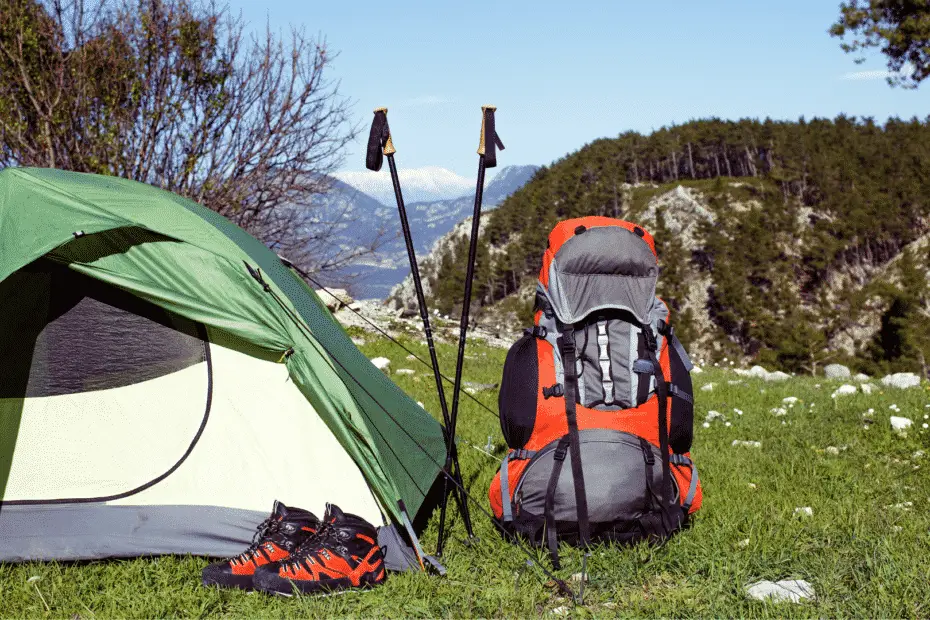Let’s face a simple fact, quality tents are expensive. My 3-Person tent was over $200 and I’d hate to see it get damaged. Tent footprints are a great way to protect your tent floor, but are they worth the cost ($20-$40+)? Do I need a tent footprint?
Tent footprints protect a tent’s floor from abrasive surfaces, punctures from sticks/stones, and keep the bottom of your tent clean. I recommend using a tent footprint most of the time, but you can get by without them with proper site selection and cleanup. The only times tent footprints are 100% necessary are on rough surfaces that could puncture the tent and when you’re dealing with tree sap and mud.
Tent footprints are a cheap and easy way to protect your tent floor from punctures, abrasions, and messy stuff like mud and sticky tree sap. You can get by without a footprint, but the added cost is well worth the benefit. There are cheaper DIY options that I’ll go over if you don’t have the budget for a real tent footprint.
In the rest of this post, I’ll go over all of the benefits of using a tent footprint and go over a few cheap alternatives you can use to save some money. Most people have a spare tarp (it needs to be sized right) or you can find a few feet of Tyvek housewrap if you’re friends with a contractor.
Table Of Contents
Do You Need A Tent Footprint?
You don’t technically need a tent footprint (aka ground cloth), but they do protect your tent from punctures and keep the bottom of your tent clean. Whether or not you use a footprint depends on your risk tolerance, tent cost, and whether or not you’re willing to clean mud/sap off the bottom of your tent (washing off a footprint is easy).
Let’s quickly go over the main benefits of using a tent footprint. I’ll explain each of these benefits in detail below. You can click on the links to jump down to the relevant section.
- Tent Footprints protect the bottom of your tent from punctures (sharp sticks, stones, pine needles, rough campground platforms, etc.).
- Footprints add a layer of protection against abrasive surfaces (sand, cement, gravel).
- Keeps mud, tree sap, and other messy substances off of your tent. Tent footprints are much easier to clean!
- There’s less debris cleanup required before pitching your tent.
- Makes spacing your tent around trees, routes, and other obstacles easier.
- Tent footprints don’t increase the waterproofing of your tent floor, but they do help when dealing with floor punctures and seam issues.
Cheap Footprints Are Good Enough For Most People!
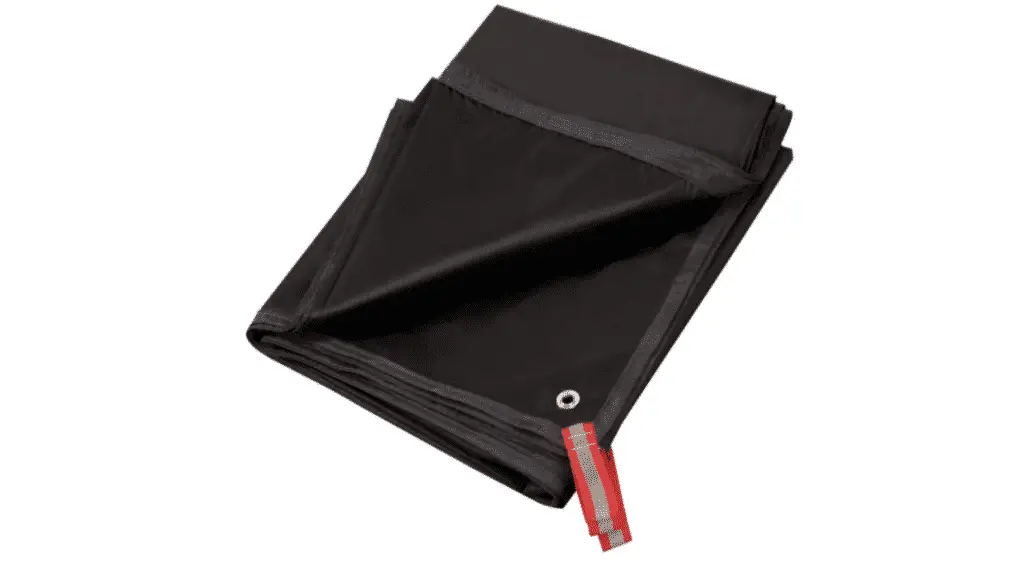
There are cheap/lightweight DIY Footprints that I’ll go over at the bottom of this post, but you don’t have to spend a lot of money on a tent footprint. An ultralight footprint that weighs less than 1/2 lb will cost about $50, but a cheap Redcamp Footprint is good enough for 99% of people. They’re affordable, easy to pack into a small fist sized bag, and weigh about 1lb.
You can usually find an ultralight footprint that’s perfectly sized for your tent from the tent manufacturer, but plan on spending at least $50-$80. Most ultralight/lightweight backpackers go with a TYVEK Sheet with grommets added for an 6-8oz setup.
Just make sure whatever footprint you choose is 2-3 inches smaller than the outside walls of your tent. I’ll explain each of these benefits throughout this post, but you can skip down to the section where I explain how to size a tent footprint and I’ll also go over cheap alternatives.
Benefits Of Using A Tent Footprint
Let’s start out with the biggest misconception about tent footprints. Despite what most people believe, tent footprints don’t help with waterproofing a tent floor! Every tent comes with a waterproof “bathtub style” floor. The only time it might help with waterproofing is if there’s a puncture or seam leakage.
The main purpose of a tent footprint is to protect your floor from punctures (sharp rocks, sticks, pine needles, etc.), abrasions (sand, cement, rough wood platforms), and keep the bottom of your tent clean. You can get around using a footprint with proper seat placement and cleaning out debris, but you’ll still have to clean off the bottom of your tent.
1. Tent Footprints Protect The Bottom Of Your Tent From Punctures
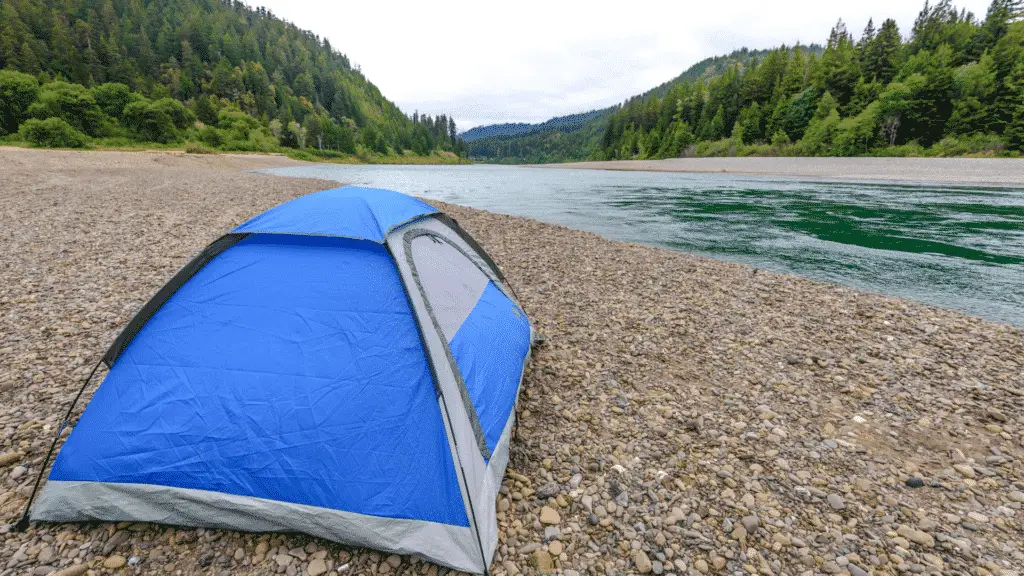
Tent floors are designed to be lightweight and compact so they’re easy to pack. Manufacturers use the thinnest fabric they can find that still holds up to moderate abuse. Walking on the floor won’t cause damage, but it doesn’t take much to puncture a hole through the fabric.
Cleaning out large sticks and sharp rocks helps, but you always end up missing something. All it takes is a sharp rock/stick hidden under the grass/leaves or a single pine needle to puncture through the waterproof floor. I’ve also camped in areas where it would be impossible to remove everything (picture above).
You can always patch a punctured floor with Tenacious Tape, but footprints stop punctures before they become a problem. A small puncture in the footprint that needs to be repaired, is better than damaging an expensive tent. I’d rather a handful of patches on my $20 footprint than ruin the waterproofing on my tent floor.
2. Footprints Protect Against Abrasive Surfaces

Hard abrasive surfaces can quickly wear through a tent’s floor. This is rarely a problem in remote camping situations, but you never know what site you’ll be given at a public/private campground. Hopefully you’re camping on grass/dirt, but you might be placed on a cement pad, wood platform, or gravel driveway.
I can remember the first time I was assigned a wooden platform. It was a great site next to a lake, but I had no idea how to pitch a tent on a wooden platform. Two nights into the trip a wood spike tore a huge hole through the bottom of my tent. I was seriously pissed off! That’s when I decided to always carry a footprint regardless of where I’m camping.
Sand also causes major problems with tents. It’s basically like setting your tent up of sand paper that will slowly wear through the waterproof fabric. You might have problems at first, but it will eventually become an issue.
3. Keeps Mud, Tree Sap, And Other Messy Substances Off Your Tent
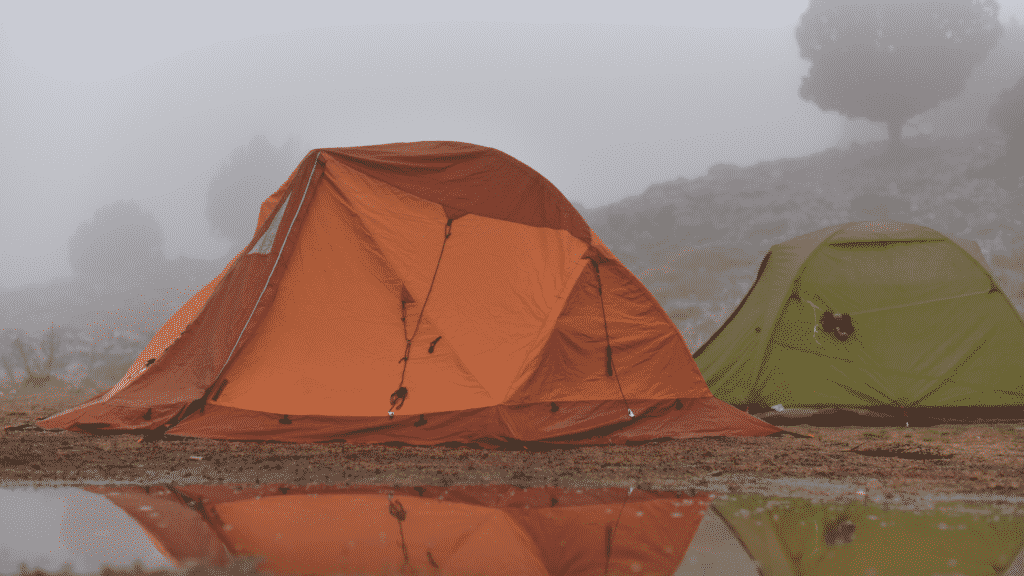
It doesn’t matter how well you plan, there’s no way to completely avoid the rain. Camping in the rain doesn’t have to ruin your trip, but you will have to deal with lots of mud. You can usually keep mud out of the inside of your tent, but the bottom of your tent will be a muddy mess without a footprint.
Tree sap is another major hassle (especially in coniferous forests). Tree sap leaves a sticky residue all over your gear that takes serious scrubbing to clean off. I can scrub off a footprint in my utility sink or bathtub, but I’d need to setup my tent outside for cleaning if I didn’t have a footprint.
Cleaning the bottom of your tent is hard! You have to set up the tent, wash it down, and leave it up for at least 24 hours to dry. The entire cleaning process takes 1-2 hours and then you have to leave the tent up for a day to dry off.
It’s so much easier to clean a tent footprint! Hose it off, spray on cleaner, and scrub down stubborn areas (you can do it in a sink/tub). I use a pressure washer and a mixture of water and simple green, but make sure your at least 2ft from the fabric to prevent damage. It will dry within an hour and you can drape it wherever you want.
4. You Don’t Have To Spend As Much Time Cleaning Up Sharp Debris
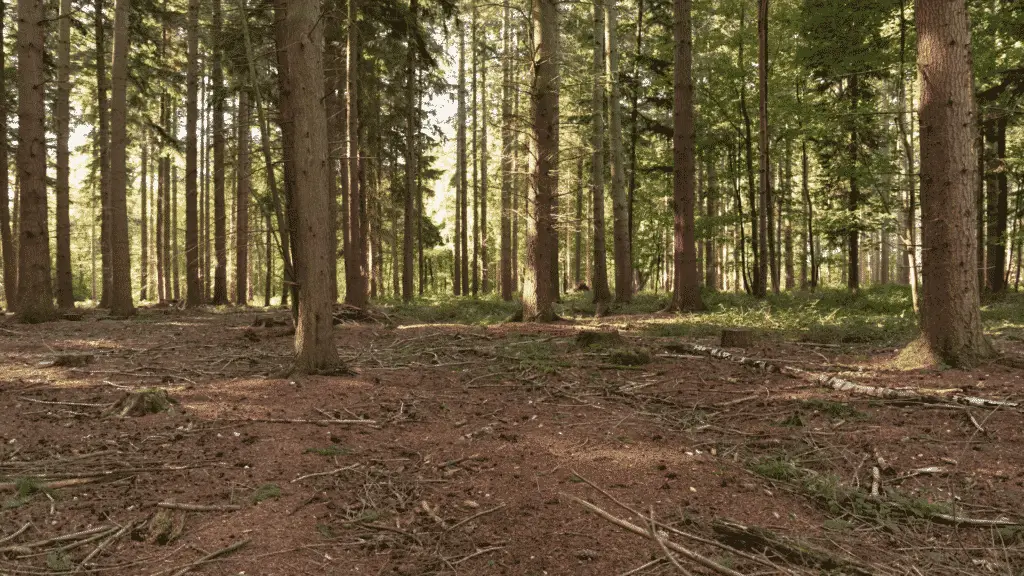
You should always clean up the ground before pitching your tent. Remove anything that could possibly puncture your tent floor or footprint. Stack branches off to the side so you can use them in your campfire and and pull out large rocks that could cause issues.
That’s still a nice rule to follow with a footprint, but you don’t need to be as thorough. Smaller twigs/stones that would easily puncture a tent, won’t cause issues with your footprint. Footprints use thicker fabrics and there’s usually a little bit more flexibility to mold around sharp objects.
It’s also a much easier to pitch your tent over a bed of pine needles when you’re camping in coniferous forests with lots of pine trees. Setting up a tent on pine needles without a footprint is asking for problems. They’re basically like millions of hypodermic needles and it’s impossible to move all of them.
5. Easier To Space Out Your Tent Around Obstacles
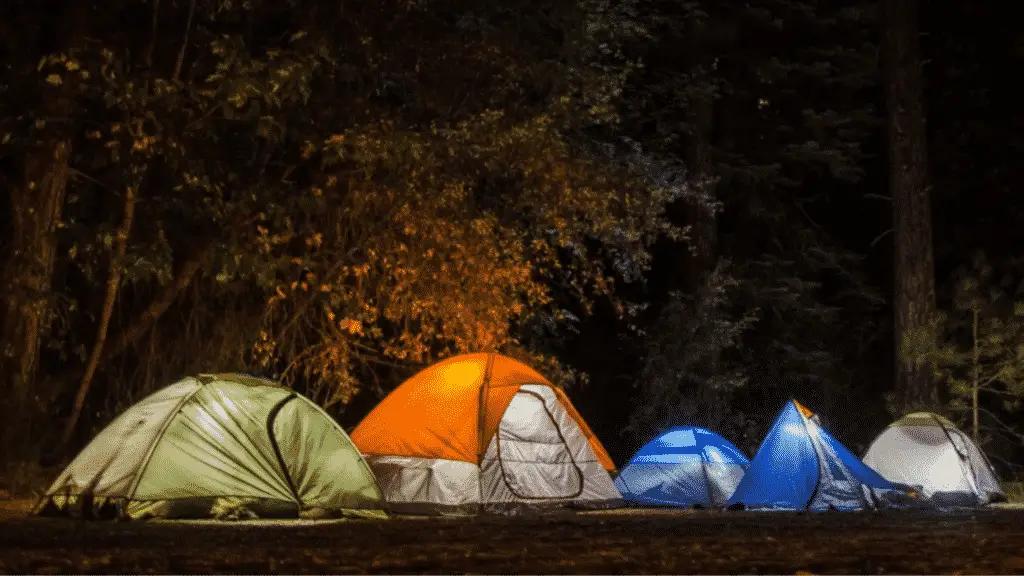
It can be hard to figure out exactly where your tent needs to go when you’re dealing with obstacles and multiple tents. You can get a rough idea of where the tent needs to go, but I always end up needing to move my tents around to avoid roots, trees, and other obstacles.
That’s not an issue with tent footprints. Lay down the footprint and you have a rough idea of where the edges of the tent will be. You may have to slightly adjust guy lines, but that’s easy.
6. Adds Waterproofing To Damaged Tent Floors
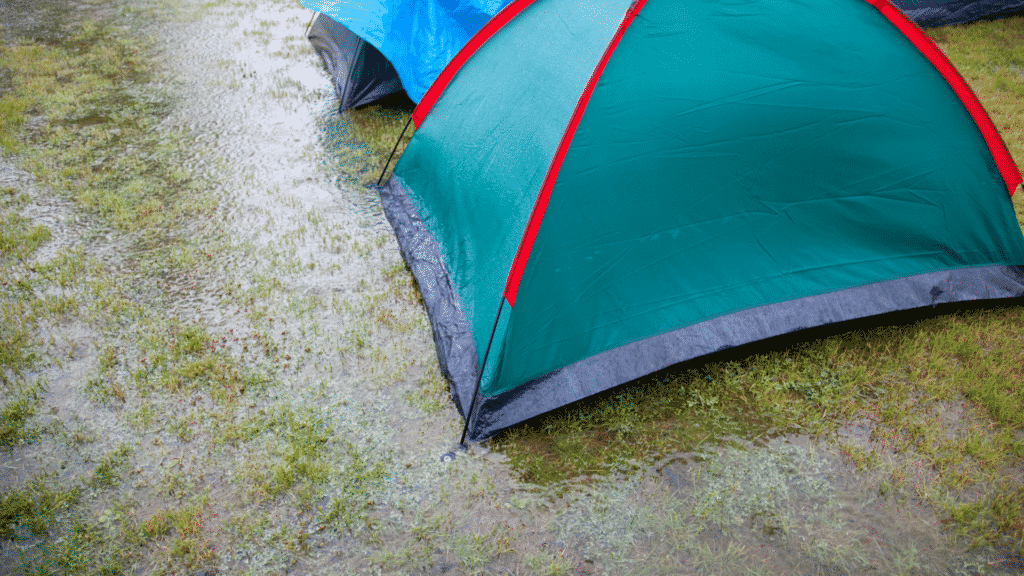
Almost every tent comes from the factory with a waterproof “bathtub style” floor. Floorless tents are the only designs that don’t have waterproof floors and people almost always use some kind of ground cloth with those.
The waterproofing is great at first, but you end up with punctures and the seams wear down around the edges. Tent footprints don’t help with waterproofing on a new tent, but you will notice a difference if you’re floors damaged. Just make sure the footprint is 2-3 inches smaller than the outside walls of your tent so you don’t end up with pooling water.
You Don’t Always Need A Footprint, But They’re Nice To Have
When I’ve used budget $20-$50 Walmart tents in the past it never made sense to purchase a tent footprint. A footprint is nice if you already own one, but it would have cost more than replacing a cheap tent. Just use a cheap tarp as a tent footprint and make sure it’s a few inches smaller than the outside edges of your tent to prevent pooling water.
I still have a cheap tent for my kids/friends to use, but I use a lightweight backpacking tent most of the time (cost more than $200). I’m a typical broke middle class American and it would really bother me to damage my tent. That’s why I almost always use a tent footprint! The only time I might leave it at home is when I’m camping in a family campground and know I won’t be dealing with mud.
Plus it’s much easier to wash a footprint since you don’t have to setup the tent. I mix a few oz of Simple Green with water and use my pressure washer about 2 feet away from the footprint to avoid damage (takes less than 10 minutes).
You may also want to leave your footprint behind if you’re trying to cut down your pack weight. This is extremely common in the ultralight/lightweight backpacking communities. Most footprints weigh less than 1lb and pack small, but every lb counts when you’re trying to drop reduce your trail weight (less than 20lb lightweight and 10lb ultralight).
It doesn’t always make sense to use a tent footprint, but they’re a cheap way to protect an expensive tent. Almost anybody can afford a budget Redcamp Tent Footprint and they’re surprisingly durable/light for the price.
Tent Footprints Need To Be 2-3 Inches Smaller Than The Tent
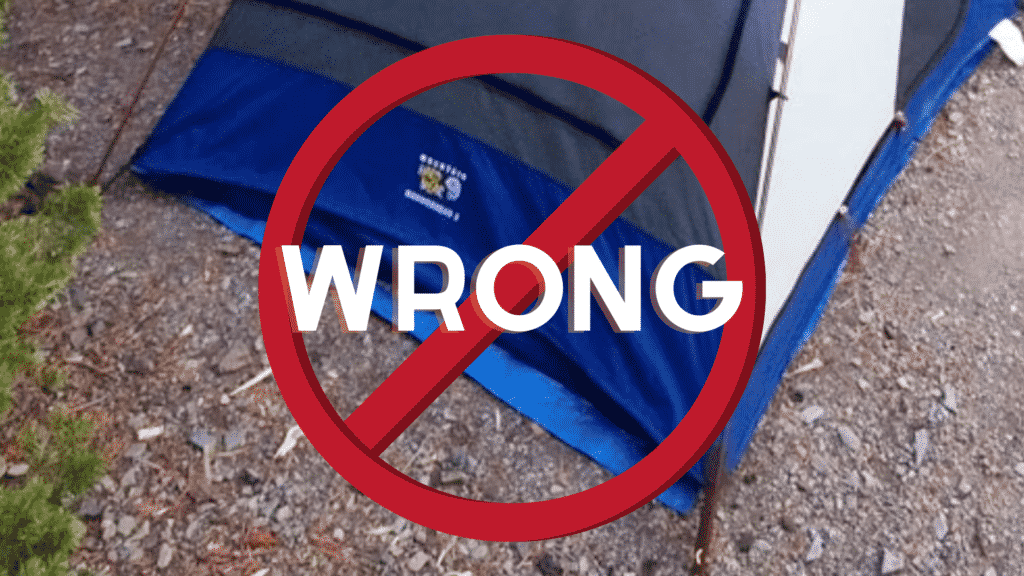
The vast majority of people don’t know how to use a tent footprint. A footprint that sticks outside the edges of your tent is too big. Tents are designed to divert water around the tent walls so it can absorb into the ground.
Footprints are waterproof so all that water will pool up around the edges of your tent. That’s not a huge issue with a brand new tent, but it can cause issues with older tents that have leaking seams and punctures.
Make sure your tent footprint is 2-3 inches smaller than the outside edges of your tent. A footprint that’s a little bit smaller than that is better than one that’s sticking past the sidewalls. You can always cut off the extra fabric or fold the footprint under your tent if it’s too big.
Cheap Alternatives To Tent Footprints
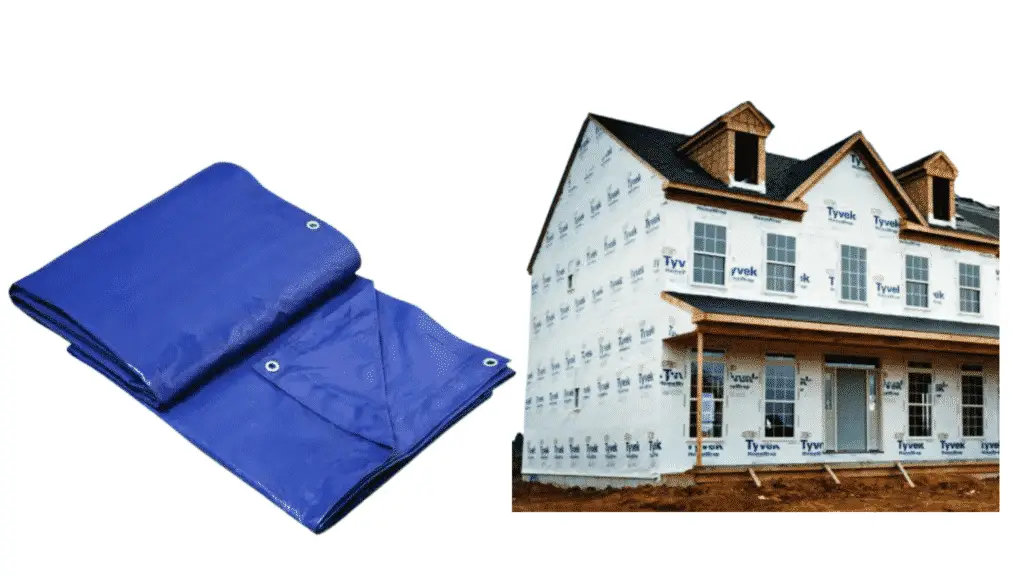
You can buy a tent footprint for like $20 so they’re not all that expensive, but you may have something in your house/garage that you can use instead. Any thick sheet of lightweight waterproof fabric will work, but most people use tarps or TYVEK sheets of house wrap.
Check out my guide explaining how to use a tarp as a tent footprint. It explains how to cut down the tarp without damaging the edges, size the tarp, and install grommets. The entire process takes less than 10 minutes and you probably have a cheap tarp sitting somewhere in your garage.
Buying an entire roll of TYVEK house wrap will set you back about $70, but you only need a small 5x8ish piece. I don’t have spare rolls of TYVEK laying around, but my carpenter/contractor friends always have some in their garage.
You can also order small pieces of TYVEK to use, but that will be close to the same price as a cheap footprint. The only advantage you have is that TYVEK will almost always be lighter than traditional footprints. So an ultralight backpacking footprint that usually costs $50-$70 will be less than $20.
